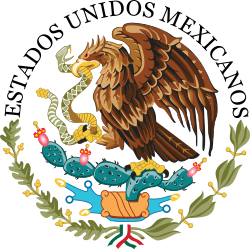| Military of Mexico |
|---|
 |
| Components |
| Personnel |
| History and awards |
The military rank of General in Mexico is divided into four categories:
- General Brigadier: equivalent to the Brigadier and between "Coronel" (Colonel) and "General de Brigada" (Brigade General). [1]
- General de Brigada: Brigade General.
- General de Division: Divisional General.
- General Secretario de la Defensa Nacional: The highest military rank in the Mexican army - the "Secretary of Defense". The only person ranking higher is the President of Mexico.
 |  |  |  |